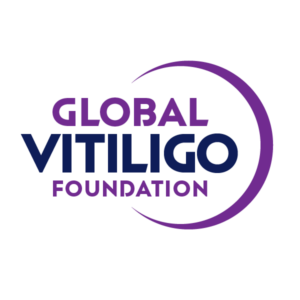Amit G. Pandya, MD
Dermatologist, Palo Alto Medical Foundation, Sunnyvale California
Clinical Professor, Department of Dermatology, University of Texas Southwestern Medical Center, Dallas, Texas
As the new president, what is your vision for GVF?
It is with great pleasure and excitement that I begin my term as president of the Global Vitiligo Foundation. I have very much enjoyed being a part of this wonderful organization since its inception. I am indebted to Iltefat Hamzavi for his consistent leadership and attention to the GVF, helping to guide it from a fledgling group of interested individuals to the excellent organization that it is today. He and Henry Lim put in countless hours to create the Vitiligo Working Group in 2011, after which they were joined by Pearl Grimes, John Harris and myself. In 2016 we incorporated as the GVF to form a Foundation that would address the needs of individuals with vitiligo and those who care for them. Since then, we have added many individuals to our leadership team to make the GVF even better. With Iltefat stepping down, I have huge shoes to fill and will rely on him, my colleagues on the leadership team and the whole vitiligo community to help me as we work to improve the lives of those with vitiligo.
Our Mission is “To improve the quality of life for individuals with vitiligo through education, research, clinical care and community support.” Our Vision is “a world where the burden of vitiligo is eliminated through compassion, care and cure.” I am inspired by these words as I think about my vision for the GVF over the next year. My impetus comes from conversations I have with individuals with vitiligo every week in my clinic. Their hopes, fears, successes, frustrations, joy, sadness, comfort, pain, contentment, dissatisfaction all have an effect on my outlook regarding this condition and motivate me to do more in the field of vitiligo research, clinical care and education. My focus will be on improving the many existing GVF programs, such as educational events, GVF website and our GVF community interactions as well as to develop new programs to link individuals with vitiligo with credible information sources and support and educate more clinicians on the nuances of vitiligo diagnosis and management. With the support of my colleagues in GVF leadership, TREX, our management company, patient support groups, individuals with vitiligo and those who care for them, I believe we can accomplish much more to help our cause and look forward to working with all of you in the future.
Can you please tell us about your work in the vitiligo community?
My work in the vitiligo goes back about 20 years, when I started focusing on pigmentary disorders as an academic dermatologist at the University of Texas Southwestern Medical Center in Dallas, TX. Very few doctors were exploring vitiligo back then. Over the years, I have been involved in basic and translational research on vitiligo, exploring the causes, immunology and biology of vitiligo. I have also been heavily involved in research into the clinical types of vitiligo, epidemiology of vitiligo, topical, oral and phototherapy treatment of vitiligo as well as the quality of life of individuals with this condition. During this time, I was involved in support communities for vitiligo, and one of the highlights of my career was helping to organize 3 walkathons in Dallas, TX to raise awareness and support for vitiligo. Other highlights have been the ability to participate in helping to elucidate the causes of vitiligo, how to recognize active from inactive vitiligo and what to do about it and develop a method to transplant melanocytes using blisters as donor material. I am also happy with my involvement in several quality of life studies, which have shown the great impact vitiligo has on affected individuals. Being asked to help design clinical trials for the many new medications being developed for vitiligo has truly been an honor for me and the fact these medications are already being given in clinical studies has brought me great satisfaction. But the greatest highlight has been the thousands of individuals I have seen in my clinic over the last 20 years. You have inspired me to do all of the above and I continue to feel inspired by you every week in clinic.
Can you please share some of your research papers with us?
Below are some of the papers I have co-authored that I think would be of interest to the vitiligo community.
- Rosmarin D; Pandya AG; Lebwohl M; Grimes P; Hamzavi I; Gottlieb AB; Butler K; Kuo F; Sun K; Ji T; Howell MD; Harris JE. Ruxolitinib cream for treatment of vitiligo: a randomised, controlled, phase 2 trial. Lancet 2020; 396:110-120. https://pubmed.ncbi.nlm.nih.gov/32653055/
- McKesey J, Pandya AG. A pilot study of 2% tofacitinib cream with narrowband ultraviolet B for the treatment of facial vitiligo. J Am Acad Dermatol. 2019 Aug;81(2):646-648. doi: 10.1016/j.jaad.2019.04.032. https://pubmed.ncbi.nlm.nih.gov/31009664/
- Ezzedine K, Ahmed M, Tovar-Garza A, Hajj C, Whitton M, Pandya A, Altalhab S, Seneschal J, Harris J, Taieb C. Cross cultural validation of a short-form of the Vitiligo Impact Patient scale (VIPs). J Am Acad Dermatol. 2019 Feb 11. pii: S0190-9622(19)30262-2. doi: 10.1016/j.jaad.2019.02.008. [Epub ahead of print] PubMed PMID: 30763647. https://www.jaad.org/article/S0190-9622(19)30262-2/fulltext
- Tovar-Garza A, Hinojosa JA, Hynan LS, Pandya AG. Non-cultured epidermal suspension grafting using suction blisters as donor tissue for vitiligo. J Am Acad Dermatol 2018 Oct 27. pii: S0190-9622(18)32811-1. doi: 10.1016/j.jaad.2018.10.041. https://pubmed.ncbi.nlm.nih.gov/30393095/
- Richmond JM, Strassner JP, Zapata Jr. L, Garg M, Riding RL, Refat MA, Fan X, Azzolino V, Tovar-Garza A, Tsurushita N, Pandya AG, Tso JY, Harris JE. Antibody blockade of IL-15 signaling has the potential to durably reverse vitiligo. Science Trans Med. 18 Jul 2018: Vol. 10, Issue 450, eaam7710 DOI: 10.1126/scitranslmed.aam7710. https://www.ncbi.nlm.nih.gov/pmc/articles/PMC6495055/
- Rodrigues M, Ezzedine K, Hamzavi I, Pandya AG, Harris JE. Current and emerging treatments for vitiligo. J Am Acad Dermatol. 2017;77(1):17-29. https://pubmed.ncbi.nlm.nih.gov/28619557/
- Rodrigues M, Ezzedine K, Hamzavi I, Pandya AG, Harris JE. New discoveries in the pathogenesis and classification of vitiligo. J Am Acad Dermatol. 2017;77(1):1-13. https://pubmed.ncbi.nlm.nih.gov/28619550/
- Aboul-Fettouh N, Hinojosa J, Tovar-Garza A, Pandya AG. The majority of patients presenting with vitiligo have a clinical sign of activity. J Am Acad Dermatol. 2017;77(4):774-775. https://pubmed.ncbi.nlm.nih.gov/28917464/
- Mohammad TF, Al-Jamal M, Hamzavi IH, Harris JE, Leone G, Cabrera R, Lim HW, Pandya AG, Esmat SM. The Vitiligo Working Group recommendations for narrowband ultraviolet B light phototherapy treatment of vitiligo. J Am Acad Dermatol. 2017; 76(5): 879-888. https://pubmed.ncbi.nlm.nih.gov/28216034/
- Sosa JJ, Currimbhoy S, Ukoha U, Sirignano S, O’Leary R, Vandergriff T, Hynan L, Pandya A. Confetti-like depigmentation: A potential sign of rapidly progressing vitiligo. J Am Acad Dermatol. 2015; 73:272-5. https://pubmed.ncbi.nlm.nih.gov/26054430/





